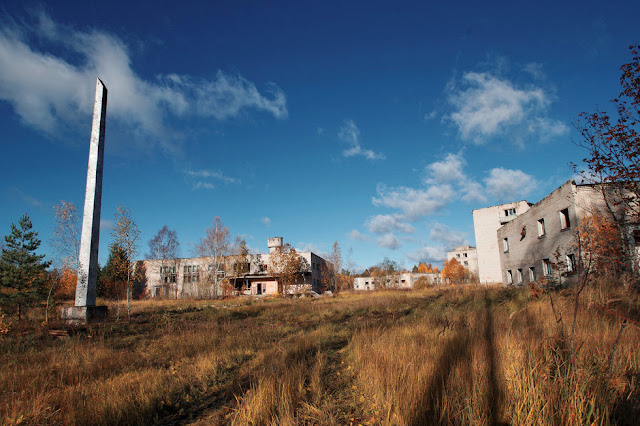The town of Skrunda-1 in modern day Latvia was of strategic importance to the Soviet Union. It was where two Dnepr radar installations were constructed in the 1960s. The two giant radars, having a length of 244 metres (801 ft) and height of 20 metres (66 ft) each, were one of the most important Soviet early warning radar stations for listening to objects in space and for tracking possible incoming intercontinental ballistic missiles.
The town was comprised by 60 buildings, including apartment blocks, a school, barracks and an officers club. After the collapse of the Soviet Union, with an agreement signed in 1994, Latvia allowed the Russian Federation to continue running the radar station for 4 more years, after which it was obliged to dismantle the station within eighteen months. Before vacating Skrunda-1 in 1998, the Russian troops dismantled the site and all material of value were carried to Russia. Since then, Skrunda-1 is a ghost town.
In 2008, the Latvian government decided to sell the Skrunda-1 site and in 2010, the entire 40-hectare (99-acre) former town was sold as a single lot at auction in Riga. The winning bid was by a Russian firm for 3.1 million USD (2.2 million EUR). However, the winner as well as the runner up pulled out of the auction. In 2015, the site was bought by Skrunda Municipality for just €12,000 ($13,450). Half the area was handed over to the Latvian National Armed Forces as a training ground while the remainder is to be leased by the local government to potential investors for development.
As of February 2016, due to increased interest at the site, the municipality began charging an entrance fee of 4 euros to individuals.
SEE ALSO: More abandoned ghost towns around the world // More abandoned military facilities // LIST OF ALL DESERTED PLACES
For more deserted places, LIKE US on Facebook and FOLLOW US on twitter
(Click here for the full post)


































